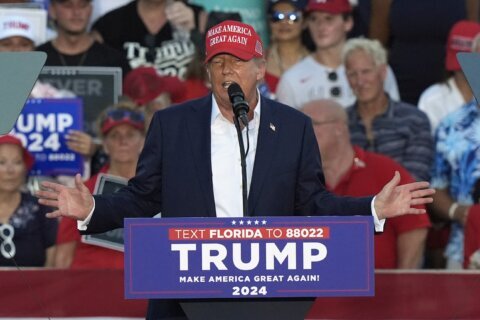Nuclear power is experiencing a renaissance following years of being shunned after a reactor disaster in Japan.
Between 2011, the year of the Fukushima Daiichi Nuclear Power Plant disaster, and 2020, 65 nuclear reactors worldwide were either shut down or did not have their life spans extended, according to the International Atomic Energy Agency. Now, around 60 reactors are under construction in 16 countries, the World Nuclear Association says.
What caused the about-face?
For one thing, nations ramped up ambitions to decarbonize their economies but don’t have enough renewable energy on tap to completely replace fossil fuels for baseload power when the sun isn’t shining or the wind isn’t blowing. Nuclear power, which doesn’t emit any greenhouse gases, fits the bill.
“Nuclear power will be absolutely essential for any nation looking to achieve its emission reduction goals or implement AI at a large scale,” says Tom Hulick, CEO of Strategy Asset Managers. “An AI query takes 10 times as much energy as a Google search, and so the demand for electricity in order to support these queries is likely to be extremely large.”
[Sign up for stock news with our Invested newsletter.]
Geopolitics have played a role as well, as countries want to be increasingly independent with their energy needs, especially after Russia’s invasion of Ukraine upended global energy markets.
As part of that effort, and with a desire to deprive Moscow of war funding, the Biden administration has banned imports of low-enriched uranium — the type needed for reactors — from Russia.
That move unlocked $2.7 billion in spending that Congress had already approved to build up the nation’s nuclear power supply chain. On Thursday, the U.S. Department of Energy issued a request for proposals for low-enriched uranium from domestic sources.
With that backdrop, let’s take a look at stocks and funds that touch on aspects of the nuclear supply chain, from mining companies to utilities:
— Energy Fuels Inc. (ticker: UUUU)
— Centrus Energy Corp. (LEU)
— NuScale Power Corp. (SMR)
— VanEck Uranium and Nuclear Energy ETF (NLR)
— Range Nuclear Renaissance ETF (NUKZ)
Energy Fuels Inc. (UUUU)
Rising uranium prices are one of the consequences of the expected increase in demand for uranium after years of low prices keeping a lid on mine development.
Production hiccups at existing mines and expectations of the Biden administration’s ban on Russian uranium have also contributed to uranium prices rising fivefold from below $20 per pound in the middle of the past decade.
This has been a boon for uranium producers, such as Colorado-based Energy Fuels.
The company mines uranium and makes natural uranium concentrates to sell to nuclear utilities. It has a mill in Utah that it says is the only conventional uranium mill operating in the U.S.
Energy Fuels expects to use existing stockpiles to produce 150,000 to 500,000 pounds of a uranium compound called U3O8 in 2024 and ramp up production further next year.
Centrus Energy Corp. (LEU)
As the domestic uranium enrichment supply chain bulks up, the Energy Department said in Thursday’s announcement that it intends to sell that uranium to utilities operating U.S. reactors.
Current large reactors use low-enriched uranium to produce electricity.
But advanced reactors and an emerging technology called small modular reactors will create a new source of demand. Advanced reactors and more than half of small modular reactor designs in development use a more concentrated form of uranium called high-assay, low-enriched uranium (HALEU), the World Nuclear Association says.
Centrus is the only company in the U.S. with a license to make HALEU, and it has been producing small quantities.
With this license and manufacturing experience, Centrus is well positioned to make the fuel for a growing number of advanced reactors, small modular reactors and micro reactors. HALEU can also be used in conventional reactors.
[SEE: 7 Clean Energy ETFs to Buy Now]
NuScale Power Corp. (SMR)
“Developing domestic capacity for LEU ensures an adequate fuel supply is available from trusted sources to maintain the current fleet of U.S. reactors and build a strong base to supply future deployments of cutting-edge nuclear technologies both at home and abroad,” the Energy Department said Thursday in its announcement of the uranium request for proposals.
Part of that future will include small modular nuclear reactors like those NuScale designs and markets.
The company says its pressurized water reactors can generate 77 megawatts of electricity each and can be scaled up to more than 900 megawatts. The design is smaller than a traditional nuclear reactor and can be used to replace retiring coal plants and provide baseload power.
NuScale has U.S. Nuclear Regulatory Commission certification for one of its designs, giving it a foothold in the emerging nuclear renaissance.
VanEck Uranium and Nuclear Energy ETF (NLR)
Investors who want a more diversified investment that spreads out risk among many stocks and types of nuclear companies can consider exchange-traded funds, or ETFs.
This ETF invests in uranium mining companies; companies that build, engineer, and maintain nuclear power facilities and reactors; companies involved in the production of electricity from nuclear sources; and companies that provide equipment, technology or services to the nuclear power industry.
More than 40% of this ETF’s holdings are in the utility sector, including Constellation Energy Corp. (CEG), which runs the biggest fleet of nuclear plants in the U.S.
Those utility holdings give this ETF a defensive tinge. Utilities are unlikely to outperform growth stocks during times of economic expansion and stock market optimism. But when the tide turns and economic uncertainty increases, utilities can act as a portfolio cushion because houses and businesses need electricity year-round, regardless of what the economy is doing.
“Nuclear is a significant clean energy source at an inflection point where governments must reconcile downward-trending nuclear energy output with increasing demand for clean energy,” the fund’s website says.
This fund has an expense ratio of 0.61%, or $61 per year for every $10,000 invested.
Range Nuclear Renaissance ETF (NUKZ)
Like the VanEck ETF, this fund offers diversified exposure along the nuclear supply chain, giving investors exposure to companies involved in advanced reactors, utilities, construction, services and fuel.
NUKZ’s biggest holding is Canadian uranium producer Cameco Corp. (CCJ), which is the world’s second-biggest miner of the radioactive element behind Kazakhstan-based JSC National Atomic Company Kazatomprom (OTC: NATKY).
As a mining company, Cameco is subject to uranium price movements, which can be volatile even though they are expected to continue rising over the long term. Still, the company is an established producer, making it less risky than exploration companies that aren’t yet in production.
Constellation is the fund’s No. 2 holding, at more than 9%, while NuScale is its third-largest holding, at more than 4%.
“With its ability to provide a baseline source of zero-emission energy, nuclear may play a prominent role in the transition to clean energy, helping fill the need for clean energy and filling in the gaps in power supply resulting from the intermittent nature of renewables,” the fund’s literature says.
The fund has an expense ratio of 0.85%.
More from U.S. News
6 Top Impact Investing Firms and Funds
7 Best Natural Gas Stocks and Funds to Buy
8 Best Energy Stocks to Buy in 2024
5 Best Nuclear Energy Stocks and ETFs to Buy Now originally appeared on usnews.com
Update 06/28/24: This story was previously published at an earlier date and has been updated with new information.







